Thousands of Roman artefacts found buried under London
- Published
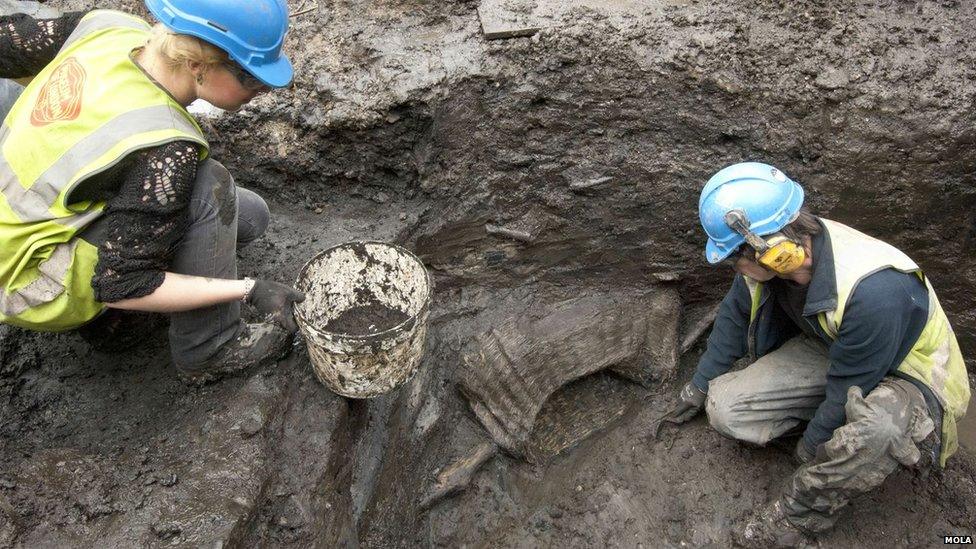
Archaeologists say they've been working on 'the most important excavation ever' after they found thousands of Roman artefacts right in the middle of London. PICTURES: MOLA
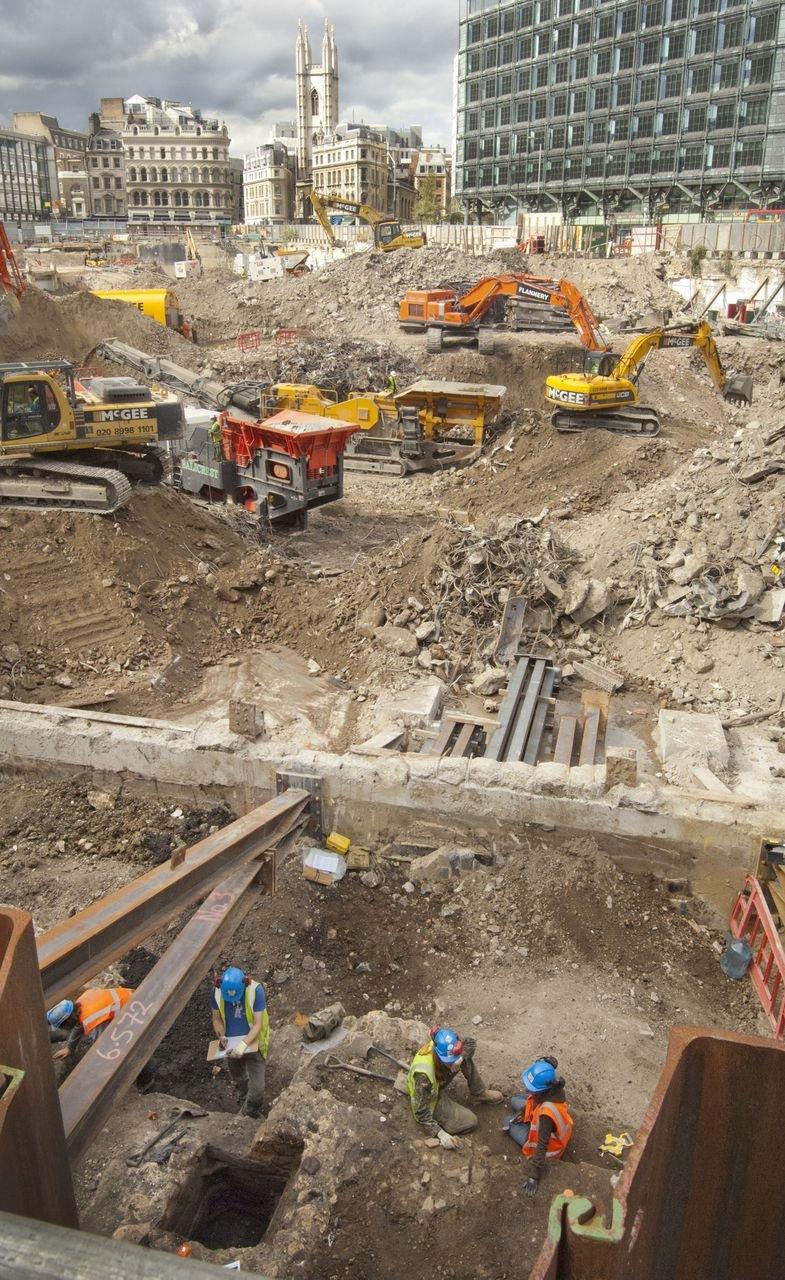
The site is surrounded by city skyscrapers and office blocks, but buried deep beneath the surface is almost a whole Roman town which is up to 2,000 years old.
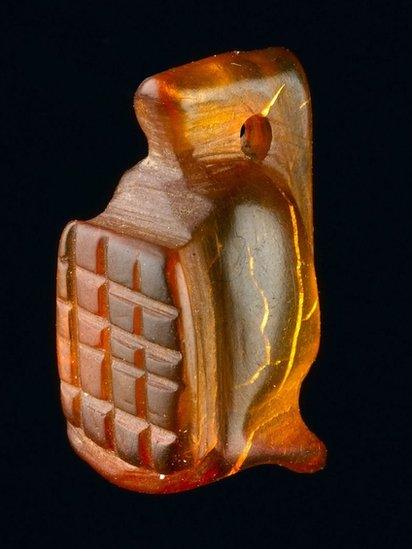
This is one of the prize finds - it's an amber amulet in the shape of a gladiator's helmet.
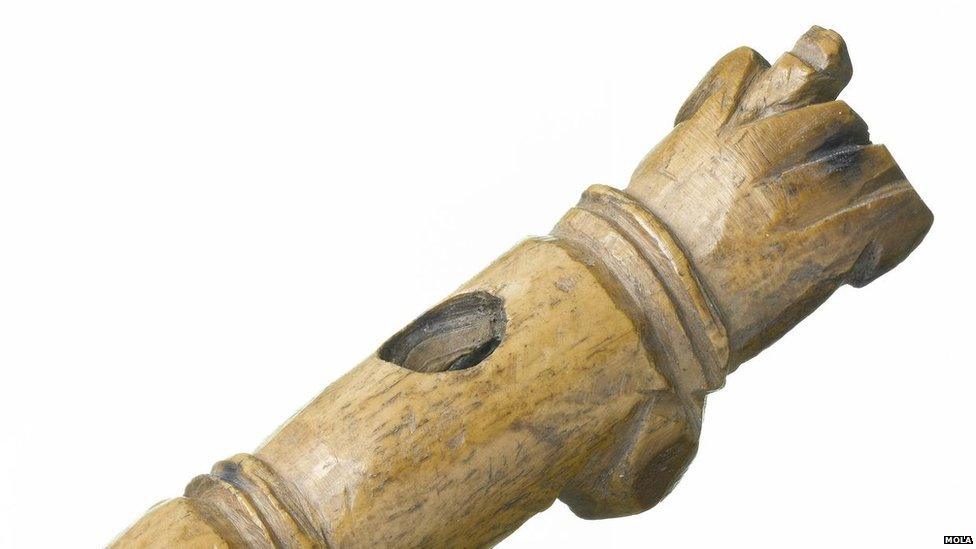
One of the thousands of ancient artefacts that have been found here is this funny-looking object which is made out of bone. It's thought to be a good luck charm.
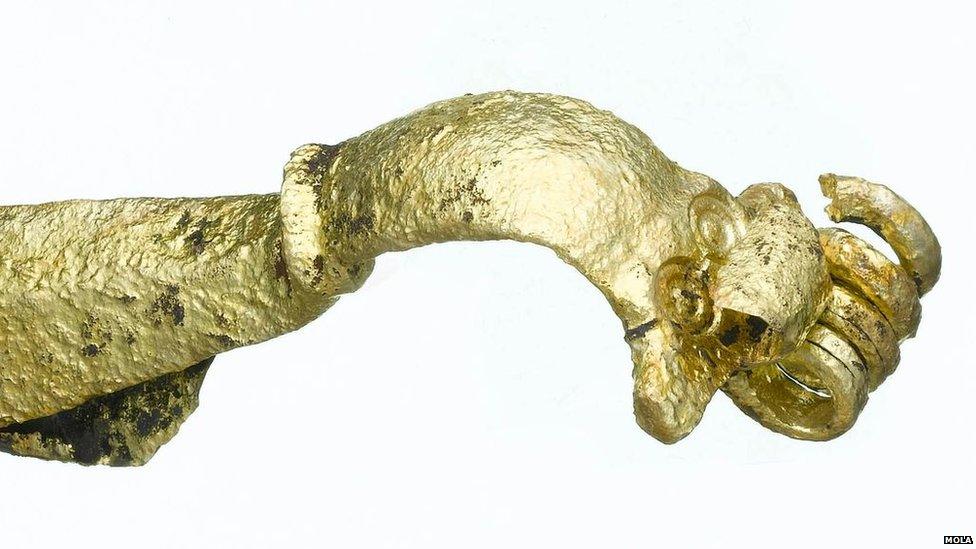
This shiny little thing is a Roman brooch and it's made out of a copper alloy, which is a type of metal.
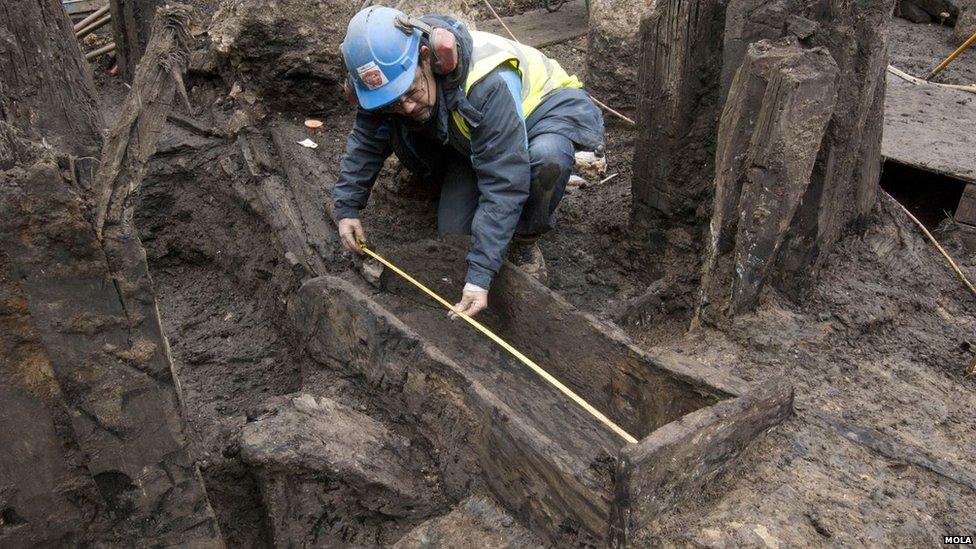
Dirty work - this Archaeologist has found an ancient drainage system buried deep in the mud. Some of the wooden structures are dated from the 40s AD and are around 40ft (12 metres) beneath the ground.
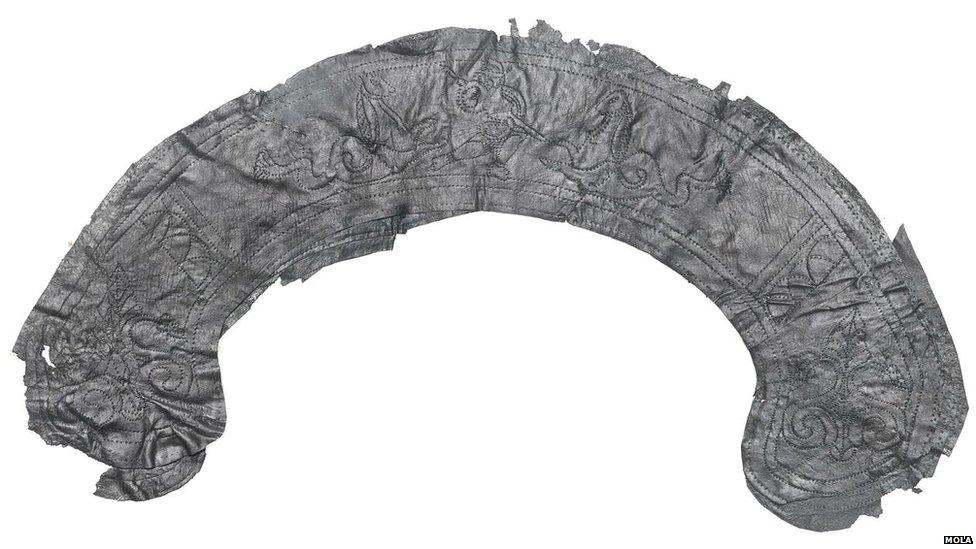
Objects made of wood and leather would normally decay but the site is so well-preserved you can even make out fine details, like on this leather cloth.
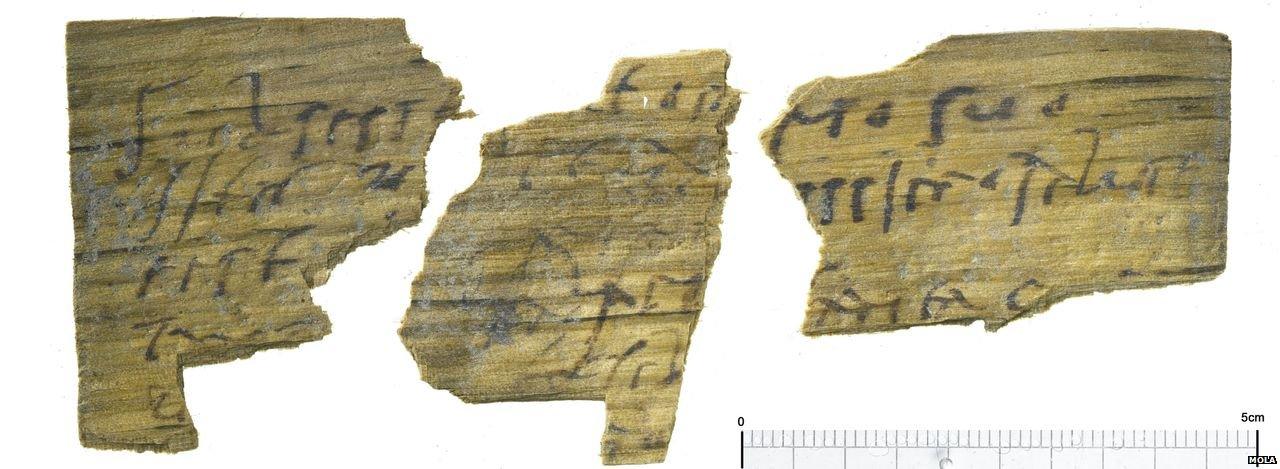
They've even found over 100 fragments of Roman writing tablets. Some are thought to contain names and addresses, while others contain affectionate letters.
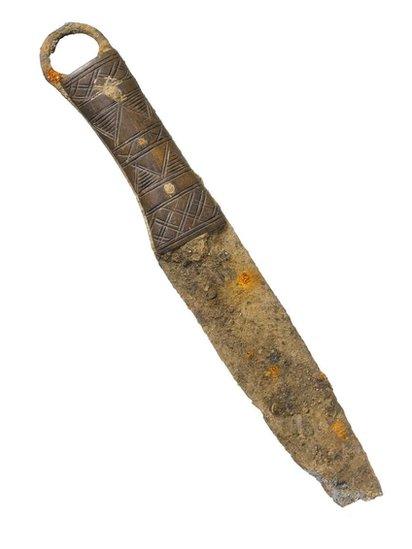
The artefacts, including this knife, will be taken to the Museum of London to be preserved. The site of the dig will eventually become the entrance to the Waterloo and City line at Bank station.
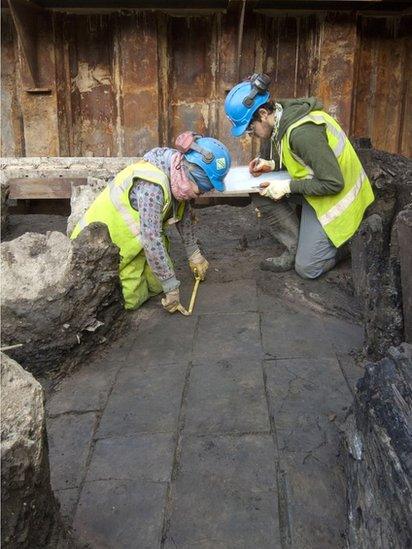
Sixty archaeologists have been working on the site since digging began and it is painstaking work, each item they find has to be fully investigated and catalogued. Here they've uncovered Roman flagstones.
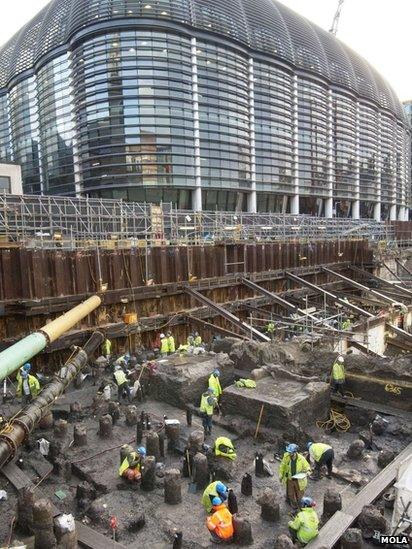
Old and the new, who would have thought right in the heart of central London lay a Roman 'town' filled with thousands of treasures. Experts say it's because it is the site of an old river bed which would have been waterlogged, making it perfect for preserving items.
